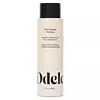What's inside
What's inside
 Key Ingredients
Key Ingredients

 Benefits
Benefits

 Concerns
Concerns

 Ingredients Side-by-side
Ingredients Side-by-side

Water
Skin ConditioningSodium Lauroyl Methyl Isethionate
CleansingCocamidopropyl Betaine
CleansingPropanediol
SolventAcrylates Crosspolymer-4
Emulsion StabilisingCocamidopropyl Hydroxysultaine
CleansingGlycerin
HumectantAminomethyl Propanol
BufferingGlycol Distearate
EmollientAloe Barbadensis Leaf Juice
Skin ConditioningAvena Sativa Kernel Extract
AbrasiveAmaranthus Caudatus Seed Extract
Skin ConditioningHydrolyzed Rice Protein
Skin ConditioningHydrolyzed Quinoa
Skin ConditioningCetrimonium Chloride
AntimicrobialPolyquaternium-10
Ethylhexylglycerin
Skin ConditioningPhenoxyethanol
PreservativeSodium Hydroxide
BufferingCitric Acid
BufferingWater, Sodium Lauroyl Methyl Isethionate, Cocamidopropyl Betaine, Propanediol, Acrylates Crosspolymer-4, Cocamidopropyl Hydroxysultaine, Glycerin, Aminomethyl Propanol, Glycol Distearate, Aloe Barbadensis Leaf Juice, Avena Sativa Kernel Extract, Amaranthus Caudatus Seed Extract, Hydrolyzed Rice Protein, Hydrolyzed Quinoa, Cetrimonium Chloride, Polyquaternium-10, Ethylhexylglycerin, Phenoxyethanol, Sodium Hydroxide, Citric Acid
Salicylic Acid 3%
MaskingWater
Skin ConditioningSodium Methyl Cocoyl Taurate
CleansingCocamidopropyl Betaine
CleansingGlycerin
HumectantSodium Citrate
BufferingGlycol Distearate
EmollientMelaleuca Alternifolia Leaf Oil
AntioxidantSodium PCA
HumectantLactic Acid
BufferingMenthyl Lactate
MaskingSodium Gluconate
Skin ConditioningPanthenol
Skin ConditioningMentha Piperita Oil
MaskingCaramel
Cosmetic ColorantMaltodextrin
AbsorbentHydrolyzed Gardenia Florida Extract
AntioxidantCharcoal Powder
AbrasiveCocos Nucifera Oil
MaskingBiotin
AntiseborrhoeicHyaluronic Acid
HumectantSalicylic Acid 3%, Water, Sodium Methyl Cocoyl Taurate, Cocamidopropyl Betaine, Glycerin, Sodium Citrate, Glycol Distearate, Melaleuca Alternifolia Leaf Oil, Sodium PCA, Lactic Acid, Menthyl Lactate, Sodium Gluconate, Panthenol, Mentha Piperita Oil, Caramel, Maltodextrin, Hydrolyzed Gardenia Florida Extract, Charcoal Powder, Cocos Nucifera Oil, Biotin, Hyaluronic Acid
Ingredients Explained
These ingredients are found in both products.
Ingredients higher up in an ingredient list are typically present in a larger amount.
Cocamidopropyl Betaine is a fatty acid created by mixing similar compounds in coconut oil and dimethylaminopropylamine, a compound with two amino groups.
This ingredient is a surfactant and cleanser. It helps gather the dirt, pollutants, and other impurities in your skin to be washed away. It also helps thicken a product and make the texture more creamy.
Being created from coconut oil means Cocamidopropyl Betaine is hydrating for the skin.
While Cocamidopropyl Betaine was believed to be an allergen, a study from 2012 disproved this. It found two compounds in unpure Cocamidopropyl Betaine to be the irritants: aminoamide and 3-dimethylaminopropylamine. High-grade and pure Cocamidopropyl Betaine did not induce allergic reactions during this study.
Learn more about Cocamidopropyl BetaineGlycerin is already naturally found in your skin. It helps moisturize and protect your skin.
A study from 2016 found glycerin to be more effective as a humectant than AHAs and hyaluronic acid.
As a humectant, it helps the skin stay hydrated by pulling moisture to your skin. The low molecular weight of glycerin allows it to pull moisture into the deeper layers of your skin.
Hydrated skin improves your skin barrier; Your skin barrier helps protect against irritants and bacteria.
Glycerin has also been found to have antimicrobial and antiviral properties. Due to these properties, glycerin is often used in wound and burn treatments.
In cosmetics, glycerin is usually derived from plants such as soybean or palm. However, it can also be sourced from animals, such as tallow or animal fat.
This ingredient is organic, colorless, odorless, and non-toxic.
Glycerin is the name for this ingredient in American English. British English uses Glycerol/Glycerine.
Learn more about GlycerinGlycol Distearate serves as a pearlizing or opacifying agent in cosmetic products.
It's often included in cleansers and haircare products to give them a lustrous or shimmering appearance.
It is derived from stearic acid, a natural fatty acid commonly found in vegetable oils and animal fats.
Glycol Distearate isn't fungal acne safe.
Learn more about Glycol DistearateWater. It's the most common cosmetic ingredient of all. You'll usually see it at the top of ingredient lists, meaning that it makes up the largest part of the product.
So why is it so popular? Water most often acts as a solvent - this means that it helps dissolve other ingredients into the formulation.
You'll also recognize water as that liquid we all need to stay alive. If you see this, drink a glass of water. Stay hydrated!
Learn more about Water